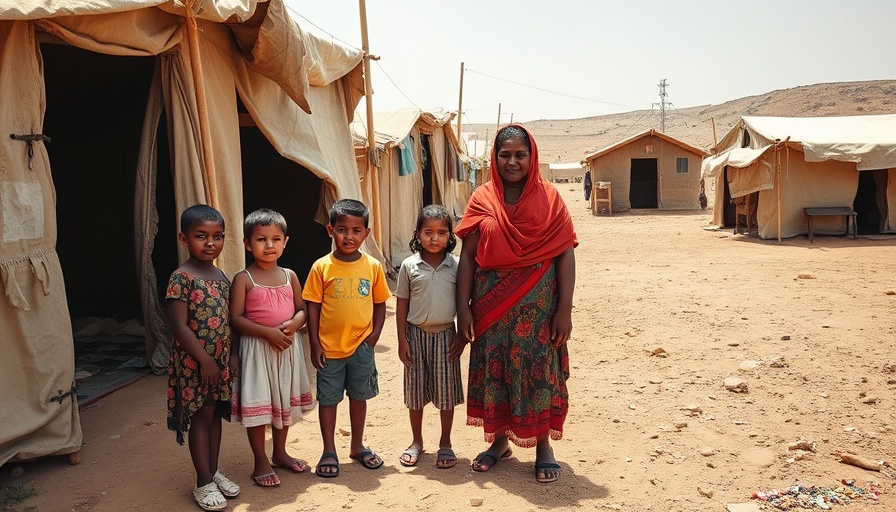
Understanding the Threat: Dried Wetlands at a Crossroads
The drying of wetlands along the Iran-Iraq border is not just an environmental issue; it's a crucial warning sign of broader implications for the region. The situation surrounding the Hoor al-Hawizeh wetlands has become dire, with dust storms becoming a frequent and dangerous phenomenon that threatens the health and economic stability of countless communities across both nations.
Once a flourishing habitat, the marshes have seen a drastic reduction in size, with reports indicating that Hoor al-Azim in Iran has lost nearly half its area since the 1970s. This transformation has escalated biodiversity loss, affecting migratory birds, aquatic life, and the delicate balance of the ecosystem.
The Human Cost of Environmental Decline
As the natural resources in these wetlands dwindle, local communities face displacement and economic despair. Without reliable food and water sources, families are forced to migrate in search of basic necessities. This disruption not only impacts livelihoods but also strains regional relations, potentially escalating tensions between Iran and Iraq.
Dr. Kaveh Madani highlights the interconnectivity between environment and human welfare, stating that climate change and human actions like dam construction and oil exploration exacerbate the situation. With increased poverty and reduced agricultural productivity, local populations are caught in a cycle of despair.
The Ripple Effects of Dust Storms
The environmental degradation leads to another pressing issue: the rise in dust storms. These storms not only impair air quality but also trigger health crises. Hospitals report increasing cases of respiratory problems linked to the dust, which could overwhelm healthcare systems already stretched thin by other social challenges.
Experts agree that addressing the root causes of this environmental crisis is vital. Initiatives should focus on sustainable practices in agriculture and water management, which can alleviate some of the pressure on these vital ecosystems. Innovations in regenerative agriculture can provide a pathway to revitalizing the land while securing food sources.
The Role of Sustainable Practices in Mitigating Impact
Create sustainable communities that prioritize eco-friendly practices can be a way forward. From implementing water conservation strategies to promoting green energy practices, these initiatives not only serve to protect the environment but also improve the quality of life for residents.
For instance, shifting towards solar power could provide renewable energy solutions for local communities, reducing reliance on increasingly scarce natural resources. Sustainable agriculture practices can help mitigate the effects of climate change while ensuring that agricultural productivity remains viable.
Looking Ahead: Opportunities for Change
The situation surrounding the drying wetlands is a complex challenge, but it also presents an opportunity for countries in the region to work collectively towards sustainable development goals. By focusing on environmental stewardship, states can foster a climate-friendly economic model that benefits both people and the planet.
Readers can play a pivotal role by supporting businesses that prioritize sustainability, advocating for environmental policies, and engaging in community efforts to promote environmental conservation. The time to take action is now, as the fate of these wetlands—and the communities that depend on them—hangs in the balance.
Get Involved: Make a Difference
Take a moment to reflect on the impact of your choices. Supporting eco-friendly products, practicing recycling, and participating in local conservation initiatives can contribute to a healthier planet. We all share the responsibility to cultivate a sustainable future, and every small action counts.
 Add Row
Add Row  Add
Add 



Write A Comment